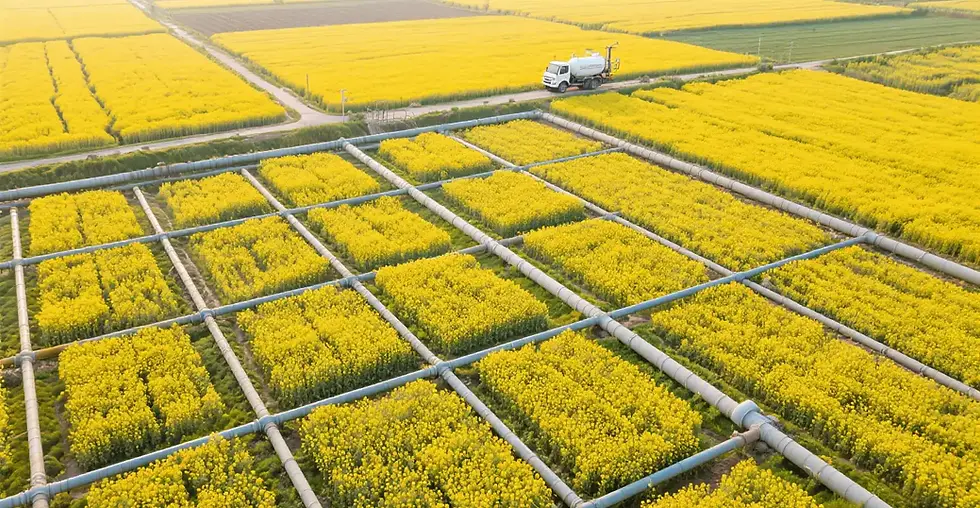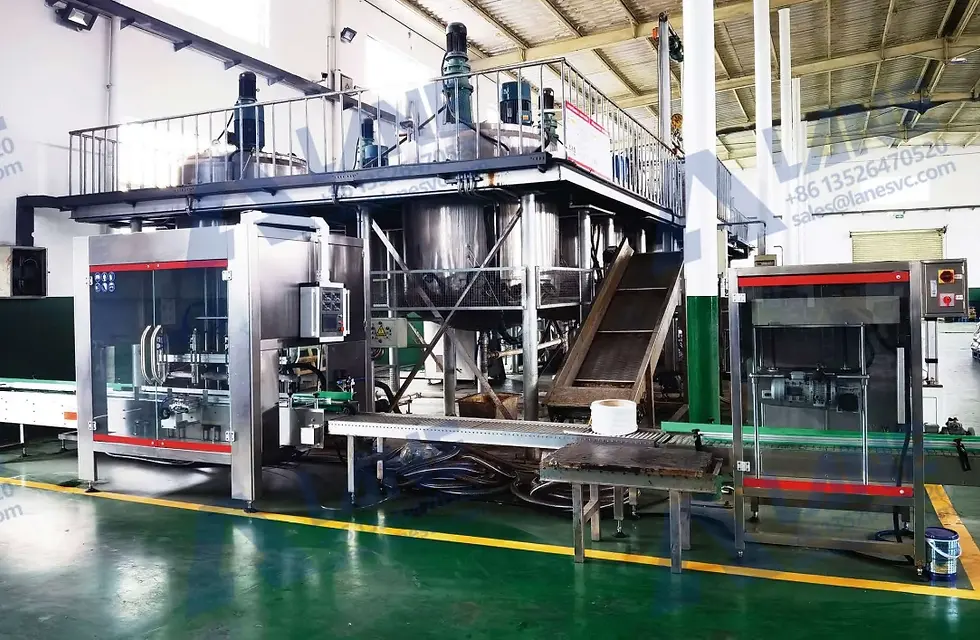Liquid Fertilizer Production Line for Farmland Irrigation
- Nancy Ju
- Sep 11
- 4 min read
For modern farmers, balancing efficiency, crop yield and environmental sustainability is a continuous challenge. Fertilizers may bring immediate results, but they often damage soil health and cause pollution. On the other hand, organic fertilizers are environmentally friendly, but the nutrient delivery may be inconsistent. The liquid fertilizer production line used for irrigation in farmlands makes up for this gap by creating a system that combines precision, efficiency and sustainability.
By transforming raw agricultural materials into liquid fertilizer solutions that integrate directly with irrigation systems, farms can deliver nutrients exactly when and where crops need them. This approach not only boosts yields but also reduces operating costs, water waste, and environmental damage. From smallholder farms to industrial-scale plantations, the adoption of a liquid fertilizer production line for farmland irrigation is becoming a cornerstone of modern agriculture.

Why Liquid Fertilizers Matter for Irrigation
Liquid fertilizers have several unique advantages compared to their granular counterparts, making them ideal for farmland irrigation:
Rapid Nutrient Uptake
Plants absorb liquid fertilizers faster through both roots and leaves, resulting in quicker growth responses.
Integration with Irrigation Systems
They can be applied through drip irrigation, sprinklers, or fertigation systems, ensuring uniform nutrient distribution.
Precision Farming
Nutrient delivery can be customized for specific growth stages, improving efficiency and crop performance.
Reduced Labor Costs
Since fertilizer application is integrated into irrigation, the need for manual labor is minimized.
Environmental Protection
Controlled dosing prevents runoff and leaching, protecting groundwater and surrounding ecosystems.
The liquid fertilizer production line for farmland irrigation therefore provides both economic and environmental value, making it an increasingly popular choice for farmers worldwide.

The Process: From Raw Materials to Irrigation
A liquid fertilizer production line for farmland irrigation typically involves a series of carefully coordinated steps to ensure quality, stability, and efficiency:
Raw Material Preparation
Inputs such as urea, ammonium nitrate, potassium chloride, phosphates, or organic extracts like seaweed and fish protein are selected and stored.
Dissolution and Mixing
Materials are dissolved in water and blended in dedicated raw material mixing tanks or additive mixing tanks. This ensures a uniform nutrient solution free from undissolved particles.
Filtration
Advanced dual filtration systems remove impurities that could clog irrigation systems, ensuring smooth fertigation.
Stabilization
Additives, chelating agents, or stabilizers are added to maintain solubility and shelf life.
Quality Control
Each batch undergoes strict testing for pH, nutrient ratios, and solubility to meet agricultural standards.
Storage and Packaging
The finished fertilizer is stored in stainless steel storage tanks and packaged into drums, IBC containers, or retail bottles for farm use.
This workflow transforms raw agricultural inputs into high-quality fertilizers that can be applied seamlessly during irrigation.
Advantages of a Liquid Fertilizer Production Line for Farmland Irrigation
Efficiency in Application: Fertilizer is applied directly with irrigation water, saving time and resources.
Precision Delivery: Nutrients reach crops exactly when needed, improving overall productivity.
Adaptability: Works with drip, sprinkler, and flood irrigation systems.
Environmental Responsibility: Controlled application reduces nutrient losses and environmental harm.
Scalability: The line can be designed for small cooperatives or large agribusinesses.
Consistency: Automated systems guarantee stable, repeatable quality across every batch.
The advantages of a liquid fertilizer production line for farmland irrigation extend beyond the farm—it also contributes to national food security, water conservation, and sustainable land management.
How Spanish Vineyards Use Liquid Fertilizer Lines
In Spain’s wine-growing regions, water scarcity and soil variability pose constant challenges. Vineyards turned to a liquid fertilizer production line for farmland irrigation to create custom nutrient blends, with particular focus on potassium and micronutrients essential for grape development.
The fertilizers were delivered through drip irrigation systems, providing precise amounts of nutrients to each vine. This practice not only improved grape size and sweetness but also reduced fertilizer waste by 15%. For vineyard owners, the line offered a reliable tool to balance tradition with modern efficiency, ensuring both crop quality and environmental responsibility.
Vietnam’s Rice Farmers Embrace Automation
In the Mekong Delta of Vietnam, rice farming is highly intensive, and traditional fertilizer use often leads to nutrient imbalances and runoff pollution. Farmers adopted a liquid fertilizer production line for farmland irrigation that could dissolve both chemical fertilizers and organic inputs like fish protein extracts into stable solutions.
Applied through sprinkler and flood irrigation, the new system shortened crop cycles and boosted yields by nearly 20%. Farmers also reported reduced fertilizer expenditures, as controlled dosing prevented over-application. More importantly, the adoption of this system improved water quality in surrounding communities by reducing runoff, making it a model for sustainable rice production.

Frequently Asked Questions
Q1: Is liquid fertilizer more expensive than granular fertilizer?
While the initial investment in a liquid fertilizer production line for farmland irrigation may be higher, operating costs are lower, and nutrient efficiency offsets the expense over time.
Q2: Can the line produce both organic and chemical fertilizers?
Yes. The system can handle either type or hybrid formulations depending on market demand.
Q3: Which crops benefit most from liquid fertilizers?
Crops like rice, maize, grapes, vegetables, and fruit trees benefit significantly due to their high nutrient requirements.
Q4: How long does installation take?
Depending on scale, a liquid fertilizer production line for farmland irrigation can typically be installed within 3–6 months.
Q5: What is the lifespan of the equipment?
With proper maintenance, equipment such as mixing tanks, filtration systems, and packaging machines can last 10–15 years.
The liquid fertilizer production line for farmland irrigation represents the next step in agricultural innovation. By integrating fertilizer production with irrigation systems, it offers farmers a way to increase efficiency, reduce costs, and promote sustainable land management.
From vineyards in Spain to rice paddies in Vietnam, the benefits of this technology are already visible. Farmers report higher yields, improved soil health, and reduced environmental damage. As global demand for food continues to rise, the liquid fertilizer production line for farmland irrigation will play an increasingly critical role in ensuring food security while protecting the environment.
For any farm—whether a smallholder cooperative or a large agribusiness—the adoption of this technology is more than an investment. It is a step toward long-term agricultural resilience and sustainability.
Email: sales@lanesvc.com
Contact number: +86 13526470520
Whatsapp: +86 13526470520






Comments